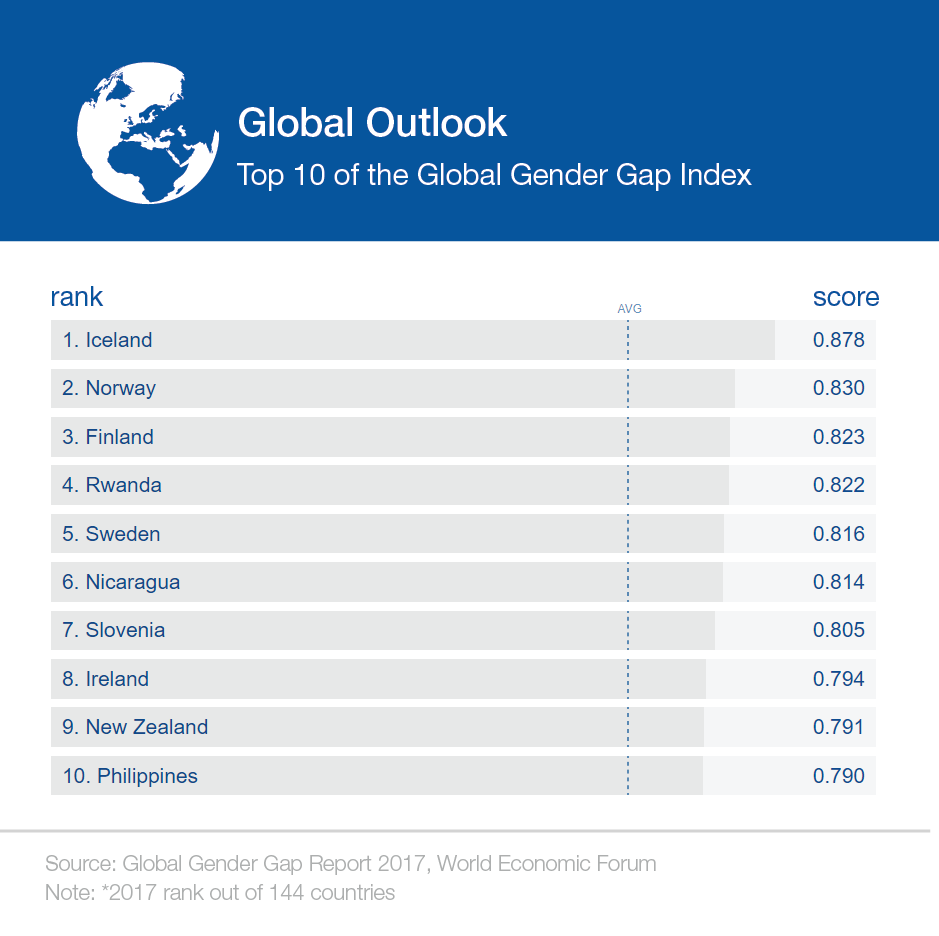The world is being deprived of a huge untapped resource.
And despite the slow but steady progress made towards gender equality over the past decade, 2017 was not a success.
In fact, the gap between men and women across health, education, politics and economics widened for the first time since records began in 2006.
“Overcoming the biases – unseen or otherwise – that are keeping us from closing the gender gap represents an overwhelming economic as well as moral imperative,” Professor Schwab said.

Image: WEF Global Gender Gap Index
The gender gap is the difference between women and men as reflected in social, political, intellectual, cultural, or economic attainments or attitudes.
So the gap in economics, for example, is the difference between men and women when it comes to salaries, the number of leaders and participation in the workplace.
Education encompasses access to basic and higher levels of education, while health looks at life expectancy and politics examines the difference between how men and women are represented within decision-making organizations.

Image: WEF Global Gender Gap Index
Since the report measures these differences irrespective of overall income levels, some relatively poor countries can perform well on the index.
Both Rwanda and Nicaragua are found in the top 10, for example, showing how these countries distribute their resources and opportunities relatively well.
But there is a notable absence of any of the world’s leading industrialized nations – the so-called G20 – within the top 10, showing that economic power is not necessarily a recipe for better equality between the sexes.
Iceland has been the world’s most gender-equal country for nine years, forming part of a trend for Nordic countries to perform especially well.
But Pakistan, Yemen, Iran, Saudi Arabia and Syria all landed in the bottom 10 out of the 144 countries scrutinized.
On average, the 144 countries in the report have nearly closed the gap in health outcomes and educational attainment.
But the gap is still wide open in political and economic participation.

Image: WEF Global Gender Gap Index
Countries need to pay attention to the gender gap not only because such inequality is inherently unfair.
The report quotes recent estimates that suggest economic gender parity could add an additional $250 billion to the GDP of the UK, $1,750 billion to that of the US and $2.5 trillion to China’s GDP.
At the current rate of progress the overall global gender gap will take a hundred years to close, while the gap in the workplace will now not be closed for 217 years.
It is a gap the world can’t afford to ignore.

